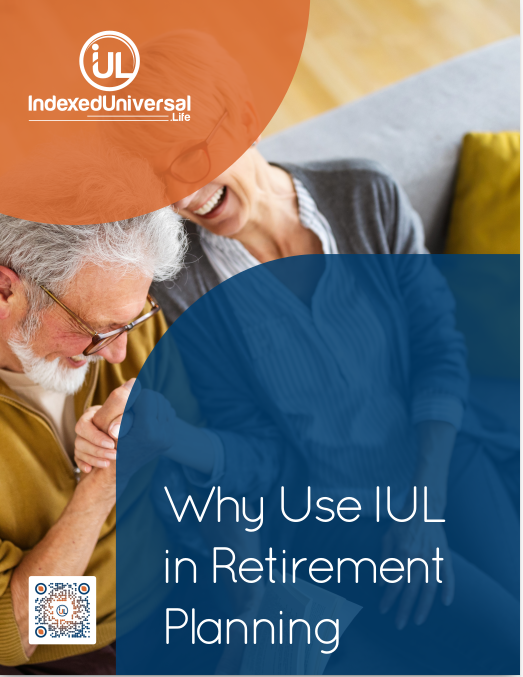
Comparing Whole Life Insurance and Indexed Universal Life Insurance
Key Takeaways:
- Whole Life Insurance offers stability and guaranteed growth, while IUL provides flexibility and the potential for market-linked cash value growth, allowing you to tailor your coverage to your financial objectives.
- Consulting with a financial advisor or insurance specialist is essential to select the policy that best suits your needs, ensuring long-term financial security for you and your loved ones.
When it comes to life insurance, two common options that individuals consider are Whole Life Insurance and Indexed Universal Life Insurance (IUL). Both types of policies offer valuable benefits, but they operate differently and are suited to different financial goals and circumstances. In this comprehensive guide, we will compare Whole Life Insurance and IUL, highlighting their key features, benefits, and considerations to help you make an informed decision about which one aligns with your financial objectives.
Understanding Whole Life Insurance
Let’s start by exploring Whole Life Insurance and its core characteristics:
Whole Life Insurance is a form of permanent life insurance that provides lifelong coverage, meaning it remains in force for your entire life, as long as premiums are paid. Here are the fundamental features of Whole Life Insurance:
- Guaranteed Death Benefit: Whole Life policies offer a guaranteed death benefit, which is the amount paid to beneficiaries upon the policyholder’s passing. This death benefit remains level throughout the policy’s duration.
- Cash Value Component: A portion of your premium payments goes into a cash value account, which grows over time at a predetermined rate set by the insurance company. The cash value is accessible through policy loans and withdrawals.
- Fixed Premiums: Premiums for Whole Life Insurance are typically fixed and do not change over the life of the policy.
Understanding Indexed Universal Life Insurance (IUL)
Now, let’s explore the basics of Indexed Universal Life Insurance (IUL):
IUL is also a form of permanent life insurance, but it offers more flexibility and market-linked growth potential. Here are the key features of IUL:
- Death Benefit: IUL provides a death benefit that is paid to beneficiaries upon the policyholder’s passing, similar to Whole Life Insurance.
- Cash Value Component: A portion of your premium payments goes into a cash value account, which has the potential to grow over time. The growth of the cash value is linked to the performance of one or more selected stock market indices, such as the S&P 500.
- Flexible Premiums: Unlike Whole Life Insurance, IUL policies often allow policyholders to adjust their premium payments within certain limits, offering flexibility based on financial circumstances.
Comparing Whole Life Insurance and IUL
Now that we’ve established the basics of both policies, let’s compare them across various factors:
1. Premiums
- Whole Life Insurance: Premiums are fixed and tend to be higher compared to IUL. This can be advantageous for individuals who prefer predictable premium payments.
- IUL: Premiums are flexible within certain limits. Policyholders can adjust premiums based on their financial situation, making it more adaptable to changing circumstances.
2. Cash Value Growth
- Whole Life Insurance: The cash value in Whole Life policies grows at a guaranteed rate set by the insurance company. While it offers stability, the growth may be lower compared to IUL.
- IUL: The cash value in IUL policies is tied to the performance of selected stock market indices. This offers the potential for higher growth, but it also comes with market risk. However, most IUL policies include a floor rate to protect against market downturns, ensuring that the cash value does not decrease due to poor index performance.
3. Death Benefit
- Whole Life Insurance: Whole Life policies provide a guaranteed death benefit that remains level throughout the policy’s duration.
- IUL: IUL policies offer a death benefit that can potentially increase over time, depending on the cash value growth linked to index performance. This can be advantageous for policyholders who want their death benefit to keep pace with inflation.
4. Access to Cash Value
- Whole Life Insurance: Policyholders can access the cash value through policy loans and withdrawals. Any unpaid loans will be deducted from the death benefit upon the policyholder’s passing.
- IUL: IUL policies also allow access to the cash value through loans and withdrawals, but the availability of funds may depend on the policy’s performance and the selected index.
5. Market Risk
- Whole Life Insurance: Whole Life policies do not expose the cash value to market risk. The growth rate is guaranteed by the insurance company.
- IUL: IUL policies have the potential for higher cash value growth, but they come with market risk. However, the inclusion of a floor rate helps protect against market downturns.
6. Flexibility
- Whole Life Insurance: Whole Life policies offer stability with fixed premiums and a guaranteed growth rate. They are less flexible in terms of premium adjustments.
- IUL: IUL policies provide flexibility with adjustable premiums and the potential for market-linked growth. This flexibility can be beneficial for policyholders who want to adapt their coverage to changing financial goals.
Choosing Between Whole Life Insurance and IUL
The choice between Whole Life Insurance and IUL ultimately depends on your individual financial objectives and risk tolerance. Here are some considerations to help you decide:
- Choose Whole Life Insurance If:
- You prioritize stability and predictability in premium payments.
- You are comfortable with lower but guaranteed cash value growth.
- You do not want exposure to market risk.
- Choose IUL If:
- You prefer flexibility in premium payments to adapt to changing financial circumstances.
- You are willing to accept some market risk in exchange for the potential for higher cash value growth.
- You want the opportunity for your death benefit to increase over time.
Conclusion
Both Whole Life Insurance and Indexed Universal Life Insurance (IUL) have their merits and are valuable financial tools. Your choice between the two should align with your unique financial goals and risk tolerance. Whole Life Insurance offers stability and guaranteed growth, while IUL provides flexibility and market-linked potential.
Before making a decision, it’s advisable to consult with a financial advisor or insurance specialist who can assess your individual circumstances and help you choose the policy that best suits your needs.
Ultimately, whether you opt for Whole Life Insurance or IUL, having life insurance in place is a crucial step in ensuring financial security and providing for your loved ones in the future.
Contact Information:
Email: [email protected]
Phone: 2129517376
Bio:
M. Dutton and Associates is a full-service financial firm. We have been in business for over 30 years serving our community. Through comprehensive objective driven planning, we provide you with the research, analysis, and available options needed to guide you in implementing a sound plan for your retirement. We are committed to helping you achieve your goals. Visit us at MarvinDutton.com . Tel. 212-951-7376: email: [email protected].





